Cryptocurrency ownership demands security, accessibility, and control. At the center of these priorities is your crypto wallet. Choosing the right wallet can make the difference between a smooth crypto experience and a costly mistake. This guide will walk you through every critical aspect of selecting the right crypto wallet, ensuring you understand the options, risks, and best practices.
What Is a Crypto Wallet?
A crypto wallet is a tool—software or hardware—that allows you to store and manage your cryptocurrency private keys. Without a wallet, you cannot access, send, or receive crypto. Your wallet doesn’t technically “hold” your crypto—it holds the keys that give you access to your funds on the blockchain.
Types of Crypto Wallets
Crypto wallets are categorized mainly into two types: hot wallets and cold wallets.
| Wallet Type | Description | Pros | Cons |
|---|---|---|---|
| Hot Wallets | Connected to the internet (e.g., mobile apps, desktop software, web wallets) | Easy access, user-friendly | Vulnerable to hacks |
| Cold Wallets | Offline storage (e.g., hardware wallets, paper wallets) | Highly secure | Less convenient for frequent use |
Hot Wallets: Convenience Meets Risk
Hot wallets are ideal for everyday transactions. They come in various forms:
Mobile Wallets
Examples: Trust Wallet, MetaMask, Coinbase Wallet
- Pros: Easy to use, quick access to funds, often support dApps
- Cons: Target for malware and phishing
Desktop Wallets
Examples: Electrum, Exodus
- Pros: Good control, more features than mobile
- Cons: Still internet-connected, can be infected by device malware
Web Wallets
Examples: Blockchain.com, crypto exchanges
- Pros: Accessible from any browser
- Cons: Typically custodial (you don’t control private keys), high risk of hacking
Cold Wallets: Maximum Security
For long-term holders, cold wallets offer unmatched security.
Hardware Wallets
Examples: Ledger Nano X, Trezor Model T
- Pros: Stores keys offline, secure chip, resistant to malware
- Cons: Costly, requires physical access for transactions
Paper Wallets
- Pros: No digital footprint, extremely secure if generated properly
- Cons: Easy to lose or damage, difficult for beginners
Custodial vs. Non-Custodial Wallets

| Type | Control | Responsibility | Examples |
|---|---|---|---|
| Custodial | Third party holds keys | Platform is responsible for security | Binance, Coinbase |
| Non-Custodial | User controls keys | You are responsible | MetaMask, Ledger |
Choosing between these depends on your priorities. Custodial wallets are easier but less secure. Non-custodial wallets offer full control but require more responsibility.
Key Features to Consider
When selecting a wallet, consider the following features:
Security
- Multi-signature support
- Two-factor authentication (2FA)
- Backup and recovery options
Compatibility
- Supports your preferred cryptocurrencies
- Works across your devices (mobile, desktop, browser extension)
Ease of Use
- User-friendly interface
- Clear backup instructions
Community and Support
- Active user base
- Developer updates
- Customer service or forums for troubleshooting
Use Case Scenarios
| User Type | Recommended Wallet | Reason |
|---|---|---|
| Beginner | Mobile wallet like Trust Wallet | Easy setup, intuitive interface |
| Trader | Web wallet on exchange + hardware backup | Fast access + secure storage |
| Long-term holder | Hardware wallet like Ledger | Maximum security |
| DeFi user | MetaMask | dApp compatibility |
How to Set Up a Wallet
- Download from Official Source: Avoid phishing sites. Only use links from the official project website.
- Create Wallet and Back Up: Most wallets generate a recovery phrase. Write it down and store it offline.
- Add Cryptocurrency: Buy from an exchange and transfer to your wallet.
- Practice Sending/Receiving: Try a small transaction first to ensure everything works correctly.
Advanced Wallet Features

- Multi-signature Wallets: Require multiple private keys to authorize a transaction—ideal for business use.
- Hierarchical Deterministic (HD) Wallets: Generate a tree of keys from a single seed phrase, allowing easy backups and privacy.
- dApp Integration: Wallets like MetaMask let you interact directly with decentralized apps on Ethereum and other chains.
Security Best Practices
- Use hardware wallets for significant amounts
- Enable 2FA and strong passwords
- Keep backups offline and in multiple locations
- Regularly update your software
- Never share your private keys or seed phrase
Emerging Trends in Crypto Wallets
- Multi-chain support: One wallet for many blockchains
- Biometric authentication: Face/fingerprint login
- Integration with traditional finance: Wallets tied to debit cards and bank accounts
- Decentralized identity features: Verifiable credentials tied to wallets
ALSO READ: How to Write a Simple Business Plan?
Conclusion
Choosing the right crypto wallet depends on how you use crypto, your tolerance for risk, and how much control you want. Hot wallets offer ease of access but come with higher risk. Cold wallets prioritize security and are best for long-term storage.
Always consider the wallet’s features, community support, and compatibility with your crypto assets. With the right setup and habits, a crypto wallet can be your gateway to secure and efficient crypto management.
Frequently Asked Questions (FAQs)
Q: Can I have multiple wallets?
Yes, and it’s often recommended. Use a hot wallet for transactions and a cold wallet for storage.
Q: What happens if I lose my seed phrase?
You lose access to your wallet and funds. Always back it up.
Q: Are mobile wallets safe?
They can be, but are more vulnerable. Don’t store large sums on them.
Q: Do I need a wallet to trade crypto?
Not necessarily. Exchanges provide wallets, but for security, transfer funds to a personal wallet.







